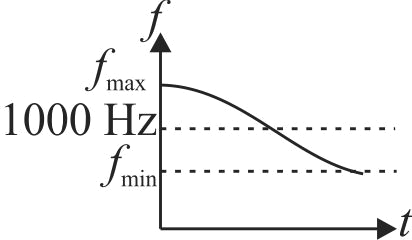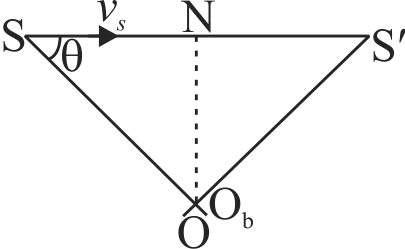354734 When the observer moves towards the stationary source with velocity, \(v_{1}\) the apparent frequency of emitted note is \(f_{1}\). When the observer moves away from the source with velocity \(v_{1}\), the apparent frequency is \(f_{2}\). If \(\mathrm{v}\) is the velocity of sound in air and \(\dfrac{f_{1}}{f_{2}}=2\) and \(\dfrac{v}{v_{1}}=\) ?
354734 When the observer moves towards the stationary source with velocity, \(v_{1}\) the apparent frequency of emitted note is \(f_{1}\). When the observer moves away from the source with velocity \(v_{1}\), the apparent frequency is \(f_{2}\). If \(\mathrm{v}\) is the velocity of sound in air and \(\dfrac{f_{1}}{f_{2}}=2\) and \(\dfrac{v}{v_{1}}=\) ?
354734 When the observer moves towards the stationary source with velocity, \(v_{1}\) the apparent frequency of emitted note is \(f_{1}\). When the observer moves away from the source with velocity \(v_{1}\), the apparent frequency is \(f_{2}\). If \(\mathrm{v}\) is the velocity of sound in air and \(\dfrac{f_{1}}{f_{2}}=2\) and \(\dfrac{v}{v_{1}}=\) ?
354734 When the observer moves towards the stationary source with velocity, \(v_{1}\) the apparent frequency of emitted note is \(f_{1}\). When the observer moves away from the source with velocity \(v_{1}\), the apparent frequency is \(f_{2}\). If \(\mathrm{v}\) is the velocity of sound in air and \(\dfrac{f_{1}}{f_{2}}=2\) and \(\dfrac{v}{v_{1}}=\) ?


